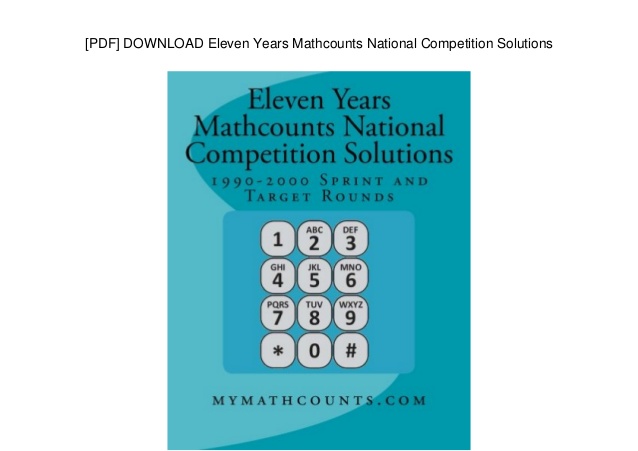Download Competition Demystified : A Radically Simplified Approach to Business Strategy –
Bruce C. N. Greenwald
Judd Kahn
ebook
Bruce C. N. Greenwald
Judd Kahn
Bruce Greenwald, one of the nation’s leading business professors, presents a new and simplified approach to strategy that cuts through much of the fog that has surrounded the subject. Based on his hugely popular course at Columbia Business School, Greenwald and his coauthor, Judd Kahn, offer an easy-to-follow method for understanding the competitive structure of your industry and developing an appropriate strategy for your specific position. Over the last two decades, the conventional approach to strategy has become frustratingly complex. It’s easy to get lost in a sophisticated model of your competitors, suppliers, buyers, substitutes, and other players, while losing sight of the big question: Are there barriers to entry that allow you to do things that other firms cannot?
Competition demystified. Once a firm’s competitive advantages are understood, Greenwald and Kahn suggest that strategic course of action is generally straight forward. For example, companies with durable competitive advantages in industries with high barriers to entry need to focus on understanding, protecting and extending their edge. Competition demystified: a radically simplified approach to business strategy by Greenwald, Bruce C. N., 1946-; Kahn, Judd, 1940-Publication date 2005 Topics. A'Competition Demystified' is a brilliant challenge to Michael Porteras 'Competitive Strategy,'a aSylvia Nasar 'Superb, with a deft balance between theory and case studies that offer fascinating explanations of strategic adventures by prominent companies' a'The Toronto Globe and Mail'. About Competition Demystified. Bruce Greenwald, one of the nation’s leading business professors, presents a new and simplified approach to strategy that cuts through much of the fog that has surrounded the subject. Competition Demystified is an insightful approach at simplifying Michael Porter's approaches in Competitive Strategy, and one of the best business strategy books I've read.
Download Competition Demystified : A Radically Simplified Approach to Business Strategy –
Bruce C. N. Greenwald
Judd Kahn
Bruce C. N. Greenwald
Judd Kahn
PDF ebook
Download Competition Demystified : A Radically Simplified Approach to Business Strategy –
Bruce C. N. Greenwald
Judd Kahn
Bruce C. N. Greenwald
Judd Kahn
EPUB ebook
Revisiting Michael Porter and barriers to entry
Harvard’s Michael Porter has famously described the five forces that shape competition. These are the threat of new substitutes, threat of new entrants, bargaining power of buyers, bargaining power of suppliers and intensity of competitive rivalry. However, professor Bruce Greenwald and Judd Kahn go a little further in their book Competition Demystified: A Radically Simplified Approach to Business Strategy, suggesting that some forces are more important than others. In particular, they believe barriers to entry, or the threat of new entrants, to be the most essential consideration.

Barriers to entry describes characteristics that rival firms or new entrants cannot replicate. Competitive advantages and barriers are really two sides of the same coin. Without barriers to entry, company returns will be driven to the cost of capital as new firms enter or replicate the incumbent’s strategy. The only viable option for firms without any competitive advantage is to operate their businesses efficiently. Greenwald and Kahn’s insight provides the groundwork for thinking about competitive advantages and strategy in business.
In this post, we will review some of the key lessons that we took from Greenwald and Kahn’s book Their work is valuable for investors in that it offers a useable framework for understanding barriers to entry, competitive advantages and the creation of enduring business value.
Competitive advantages demystified
Great managers must recognise their firm’s competitive advantages (or lack-off) and execute on a vision that positions the firm strategically. The durability of the firm’s competitive advantages, productivity and/or operating efficiency depends on management’s attentiveness and capacity to respond to structural shifts over time. Under this simplified framework, Greenwald and Khan believe there are three primary sources of genuine competitive advantages:
- Supply advantages allow companies to produce goods and services more efficiently than their competitors. This could arise from technologies or know-how that competitors cannot replicate. It is a potential source of advantage for industries with complex process, learning and/or experience requirements.
- Demand advantage, which describe the degree of customer captivity, or access to market demand. This could arise from habit formations, switching costs, searching costs and network effects that discourage customers from seeking alternative providers.
- Economies of scale, which refers to the decrease in cost per unit as the volume of units sold increases. Incumbents with greater operating scale may operate more efficiently than their competitors, even if they share similar supply and demand advantages.
Economies of scale
Competitive advantages are more durable with firms that can combine a demand advantage with economies of scale. Companies that rely on economies of scale must defend this advantage aggressively. Additionally, sheer size alone does not confer a scale advantage. Rather, economies of scale is tied to the relevant market or geography for which costs remain fixed. It is operating scale relative to competitors that is most important to consider. Industry growth may weaken the advantage of scale if fixed costs as a proportion of total expenses decline for both the firm and its competitors as a result.
Locality, captivity and durability
Competition Demystified Summary
Greenwald and Khan highlighted several more considerations when thinking about competitive advantages. Firstly, competitive advantages tend to emerge locally, whether by geographic or product specialisations. Other barriers to entry, such as government regulation or access to information, may contribute to such advantages as well. Secondly, differentiation by itself does not confer a demand advantage. Only brands that create customer captivity constitute a valuable demand advantage. Finally, it is also important to consider the durability of each competitive advantage. For example, know-how may provide only temporary advantages if competitors can replicate it over time. Similarly, innovation are unlikely to offer an advantage if they are replicable. An industry in which the ‘latest’ firm wins is an industry in which barriers to entry are unlikely to exist.
Finding franchises
Warren Buffett shares similar views on competitive advantages, noting his distinction between businesses and franchises. In his 1991 letter to Berkshire Hathaway’s shareholders, he observed that franchises that earn high returns on capital tend to offer goods that are needed or desired, is perceived to have no close substitute and whose prices are not subject to regulation. By contrast, businesses without these qualities can only enjoy abnormal profits if they are low-cost operators or when the market supply is tight. Market tightness tend to be cyclical while low-cost operations tend to require superior management.
Stable returns, margins and shares
Competition Demystified Epub
There are several clues to look for to assess whether a firm possesses enduring competitive advantages and franchise value. Greenwald and Kahn suggests that businesses with competitive advantages tend to enjoy stable market shares, stable operating margins and high return on capital consistently across time. Additionally, the number of dominant players and the intensity of firm entry and exits may provide additional colour to this.
Competition demystified
Once a firm’s competitive advantages are understood, Greenwald and Kahn suggest that strategic course of action is generally straight forward. For example, companies with durable competitive advantages in industries with high barriers to entry need to focus on understanding, protecting and extending their edge.
By contrast, companies without competitive advantages in industries with no barriers to entry should focus on operational effectiveness. For industries with very few large ‘elephants’, the ‘ants’ without any advantage may have to find their most effective exit strategy.
Greenwald also recommends we consider the motivation and incentives of the underlying decision makers when anticipating responses from competitors. Companies that are highly concentrated in certain products, customers or geographies are more likely to defend than accommodate. Strategies that ignore the reactions from competitors and stakeholders (e.g. government, customers, etc.) is potentially dangerous.
Growing profitability
Companies that enjoy competitive advantages and barriers to entry tend to extend profits and profitability in one of several ways. Firstly, they may replicate local advantages in additional markets. Secondly, they may increase focus within their niche or product space as they grow. Finally, they may seek expansion in segments that complement their existing dominance.
However, growth can sometimes bring undesirable challenges to profitability. For example, globalisation in the form of lower trade restrictions and transportation costs may weaken barriers to entry. This can allow once unseen entrants to match the economies of scale of incumbents and compete for profits.Greenwald notes that in increasingly globalised markets, effective positioning requires even greater localised advantages. We can draw similar parallels here with the impact of technological progress on competition.
Prisoner’s dilemma

It is important to consider how firms might respond to competitive pressures, as well as its impact on margins and return on capital. Additionally, it is important to consider whether firms can raise prices, lower expenses and avoid the prisoner’s dilemma. Highly competitive industries tend to encourage price wars and high reinvestment rates. This puts downward pressure on margins and returns.
The stability of competitive behaviours and strategies depend on the number of participants, and the stability and rationality of their expectations and behaviours. For example, competitors that prize relative performance, as opposed to absolute performance, may exhibit greater appetite for undercutting and/or excessive expansion.
Competitive intensity
Greenwald and Kahn highlighted several behaviours that may affect the intensity of competition, and the capacity for firms to raise prices and lower expenses:
- Avoiding direct competition: Carving specialisations and niches to avoid direct competition, reduce duplication in overhead, and increase economies of scale.
- Increase cost of switching: Creating loyalty programs with cumulative rewards to increase the cost of switching and minimise the likelihood of price competition.
- Predictable signalling: Setting signals or code-of-conducts to demonstrate orderly behaviour, avoid excess capacity or aggressive pricing, or confine aggressiveness to specific periods or produce spaces.
- Rational incentives: Designing incentive systems that reward profitability over sales growth since the latter tends to encourage more intense price competition.
- Responsiveness: Matching or responding to price changes quickly and consistently to establish price discipline, minimise competitor payoffs, discourage future price reductions, and avoid the prisoner’s dilemma.
- Non-confrontational: Entering quietly and/or delineating distinct niches may minimise the risk of direct confrontation and aggressive reactions.
- Spreading costs between competitors: Entry and expansions that spread costs across many incumbents, as opposed to concentration on single competitors, may also reduce the severity of retaliation.
Further reading
References
Competition Demystified Pdf
- Greenwald, B., & Kahn, J. (2005). Competition Demystified: A Radically Simplified Approach to Business Strategy. Further details at <https://www8.gsb.columbia.edu/researcharchive/articles/1502>
- Greenwald, B., Kahn, J., Sonkin, P., and Van Biema, M. (2001). Value Investing – From Graham to Buffett and Beyond. Further details at <https://www8.gsb.columbia.edu/researcharchive/articles/1501>
- Greenwald, B. (2005). Greenwald Explains Value Investing Principles. Columbia Business School. Accessed at < https://www8.gsb.columbia.edu/articles/columbia-business/greenwald-explains-value-investing-principles >
- Buffett, W. (1991). Berkshite Hathaway Inc Shareholder Letters, 1991. Available at < https://www.berkshirehathaway.com/letters/letters.html>